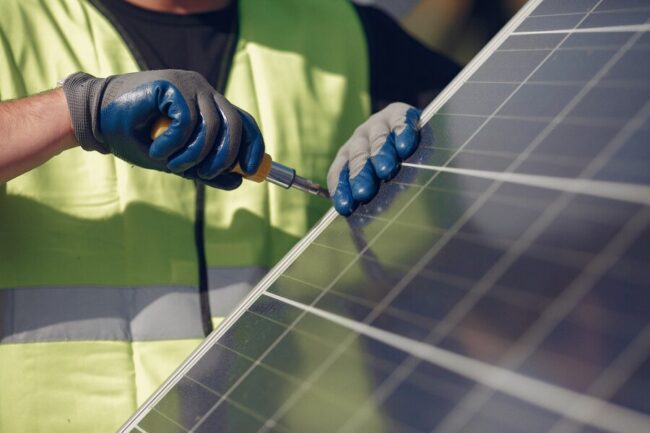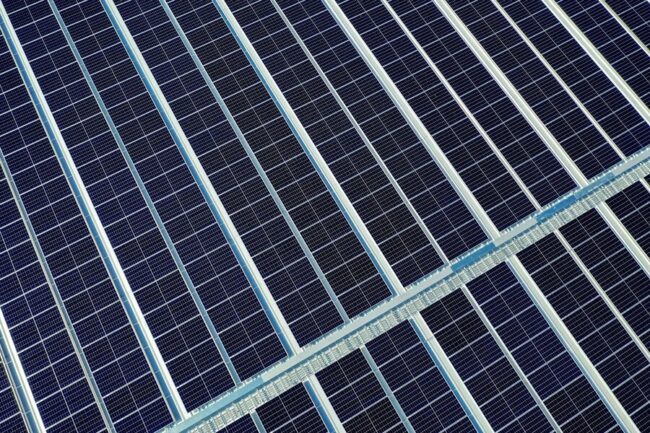As the world increasingly embraces sustainable and energy-efficient solutions, innovations in the field of solar control technology have gained significant attention. One such groundbreaking development is nano-ceramic technology in solar control film. This technology has revolutionized how we manage solar heat gain and protect interiors from harmful UV rays.
This blog post will delve into the intricacies of nano-ceramic technology and its impact on solar control films.
Understanding Nano-Ceramic Technology
Nano-Ceramic Technology involves the use of nanoscale ceramic particles in the manufacturing of solar control films. These tiny particles are dispersed evenly throughout the film, creating a protective barrier that effectively filters sunlight. Unlike traditional window films that rely on metallic components, nano-ceramic films offer a superior solution with enhanced performance and durability.
Key Features and Benefits
Nano-Ceramic Technology in Solar Control Film offers many features and benefits, making it a superior choice for managing solar heat gain and enhancing indoor comfort. Here’s a breakdown of its key attributes:
- Infrared Rejection: Nano-ceramic particles, integrated into the film, excel at blocking infrared (IR) rays—the main culprits behind interior heat buildup. By efficiently reflecting or absorbing IR radiation, these films play a pivotal role in maintaining comfortable temperatures within spaces, reducing the need for excessive air conditioning, and cutting down overall energy consumption.
- UV Protection: Solar control films with Nano-Ceramic Technology provide exceptional ultraviolet (UV) protection, boasting the capability to block up to 99% of harmful UV rays. This feature is instrumental in preventing damage to furniture, flooring, and other interior elements prone to fading and deterioration when exposed to prolonged sunlight.
- Visible Light Transmission (VLT): Despite their high-performance capabilities in blocking heat and UV rays, nano-ceramic films maintain a high level of visible light transmission (VLT). This means that while effectively mitigating solar heat, they still allow ample natural light to enter the space, preserving a bright and inviting atmosphere.
- Durability and Longevity: Including nanoscale ceramic particles significantly contributes to the overall durability of the film. In stark contrast to traditional films that may degrade over time due to metal corrosion, nano-ceramic films exhibit remarkable resistance to wear and tear. This resilience ensures a longer lifespan and sustained performance, making them a cost-effective and reliable solution.
- Clarity and Aesthetics: Nano-ceramic films provide exceptional clarity without compromising windows’ optical quality. Their ability to maintain a crystal-clear view while offering superior solar control makes them an aesthetically pleasing choice for residential and commercial applications. This combination of functionality and visual appeal sets Nano-Ceramic Technology apart as a cutting-edge solution in solar control films.

Applications
Nano-Ceramic Technology in Solar Control Film boasts versatile applications across various sectors, offering tailored solutions for enhanced comfort, energy efficiency, and protection. Here’s a closer look at its applications:
1. Residential Buildings:
Homeowners benefit substantially by incorporating Nano-Ceramic Technology in solar control films. The technology enhances indoor comfort by effectively managing solar heat gain, leading to reduced reliance on air conditioning systems. This, in turn, translates to lower energy bills. Additionally, the UV protection afforded by these films prevents damage to furniture, flooring, and other interior elements susceptible to fading and deterioration when exposed to intense sunlight. Nano-ceramic films are precious in regions characterized by high temperatures and abundant sunlight.
2. Commercial Spaces:
Businesses can optimize their environments by integrating solar control films with Nano-Ceramic Technology. These films contribute to creating energy-efficient spaces, fostering a comfortable atmosphere for employees and customers alike. In offices, retail spaces, and healthcare facilities, where maintaining a pleasant indoor climate is crucial, these films reduce heat buildup and glare. Furthermore, UV protection ensures the preservation of valuable assets, such as merchandise and equipment, by preventing sun-induced damage.
3. Automotive Industry:
Nano-ceramic films find wide-ranging applications in the automotive sector, particularly in window tinting. By incorporating this technology into automotive films, drivers and passengers experience a cooler and more comfortable ride. The films effectively block infrared rays, reducing the vehicle’s interior temperature. Moreover, UV protection helps safeguard the vehicle’s interior, preventing the fading of upholstery and protecting sensitive electronic components. This makes Nano-Ceramic Technology a valuable choice for enhancing both the comfort and longevity of automobiles.
 Future Implications and Sustainability
Future Implications and Sustainability
As we navigate an era characterized by a growing
emphasis on environmental sustainability, the role of Nano-Ceramic Technology in solar control films holds promising potential for the future. Here, we delve into the anticipated implications and the alignment of this cutting-edge technology with the global push for energy efficiency and sustainability.
- Advancements in Nano-Ceramic Technology: The ongoing research and development in Nano-Ceramic Technology will likely bring further advancements. This could involve refining the composition of nanoscale ceramic particles, optimizing their distribution within films, and enhancing overall performance.
- Expanded Applications: As Nano-Ceramic Technology continues to evolve, we can anticipate its expanded applications across diverse sectors. Beyond residential, commercial, and automotive uses, this technology may find its way into other industries seeking innovative solar control and energy efficiency solutions.
- Global Sustainability Goals: The global community’s increasing commitment to sustainability aligns seamlessly with the principles embodied by Nano-Ceramic Technology. By reducing the need for excessive air conditioning, these films contribute directly to lowering energy consumption, aligning with global initiatives to combat climate change and promote sustainable practices.
- Reduced Environmental Impact: Unlike traditional window films that may contain metallic components, Nano-ceramic films are known for their durability and resistance to wear and tear. This longevity ensures prolonged performance and reduces the frequency of replacements, minimizing the environmental impact associated with film production and disposal.
- Energy Efficiency and Green Building Practices: Integrating Nano-Ceramic solar control films can become crucial in green building practices. Architects and builders may increasingly adopt these films as part of energy-efficient designs, contributing to the creation of sustainable and environmentally friendly structures.
- Consumer Awareness and Adoption: The rising awareness among consumers about the benefits of Nano-Ceramic Technology is likely to drive increased adoption. As individuals seek ways to reduce their carbon footprint and energy bills, the demand for solar control films incorporating this technology is expected to surge.
- Collaboration and Innovation: Collaborations between manufacturers, researchers, and industry experts can further drive innovation in Nano-Ceramic Technology. As a result, we may witness the emergence of even more advanced films that offer heightened solar control capabilities while maintaining a commitment to sustainability.
Conclusion
Nano-Ceramic Technology in Solar Control Film represents a significant leap forward in the quest for sustainable and energy-efficient solutions. Its ability to balance high-performance solar control with visual clarity and durability makes it a preferred choice for various applications. As we prioritize environmentally conscious practices, embracing innovations like Nano-Ceramic Technology becomes crucial in creating a more sustainable and comfortable future.[/vc_column_text][/vc_column][/vc_row]




